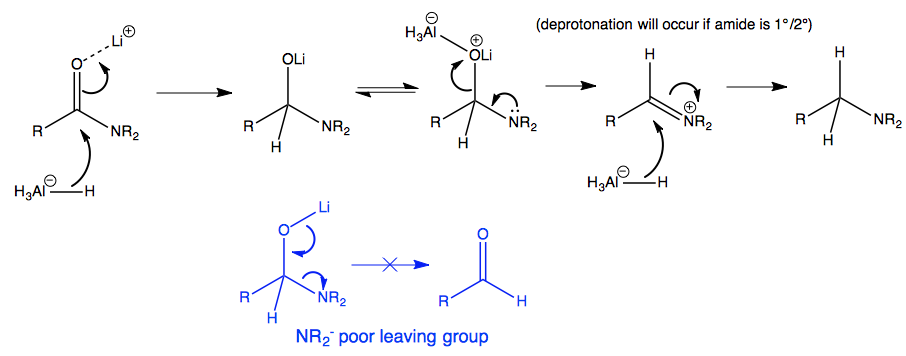Seeing that a search for "lialh4 amide" gives no previous answers on this reduction, I guess it is deserving of one. You've got it correct in your comment with the N lone pair assisting. The reason why the N lone pair kicks oxygen out, and not the other way round, is because oxygen-based groups are better leaving groups than nitrogen-based ones under the reaction conditions.
(Don't worry about how I've drawn the metals coordinating to oxygen - the exact details aren't important and sometimes aren't even fully understood.) In the aldehyde reduction, there is no lone pair to assist in the expulsion of oxygen. So the intermediate alkoxide just sits there, until you add water or acid. There's no way to get rid of the oxygen.
The aqueous workup serves two purposes: firstly to reprotonate the product (for example, with the aldehyde reduction, your final product is an alkoxide ion and adding water gets you the alcohol), and secondly to destroy any unreacted $\ce{LiAlH4}$.

